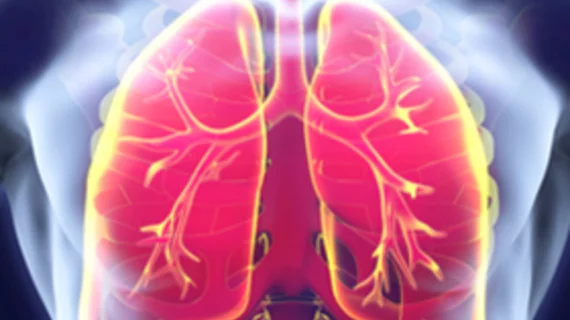The coronavirus pandemic has claimed more than 2 million lives worldwide, often due to severe lung damage and breathing problems.
For those who do survive, many carry long-term pulmonary abnormalities. But doctors are still left with more questions than answers when it comes to these COVID-19 long-haulers.
In a bid to help close this knowledge gap, a group of U.S. and Chinese researchers on Tuesday published six-month follow-up chest CT findings in patients recovered from severe COVID-19 pneumonia.
Out of 114 individuals, 62% had lingering CT abnormalities half a year later. This included 35% with fibrotic-like features, such as parenchymal bands and honeycombing patterns, among other potentially irreversible damage.
Additionally, individuals with such lung fibrotic changes had a higher rate (63%) of acute respiratory distress syndrome (ARDS), an often fatal condition that typically requires ventilator support. Whether these problems are permanent, however, will require more research, the authors explained.
“It remains uncertain whether the fibrotic-like changes observed in this study represent true fibrotic lung disease (e.g. at pathology or on longer-term follow-up CT),” corresponding author Heshui Shi, MD, with Michigan Medicine’s Department of Radiology, and colleagues added Jan. 26 in Radiology. “Whether or not these fibrotic-like changes, found at six months, reflect permanent change in the lung remains to be investigated.”
It is clear, however, that there are a number of specific factors associated with developing lung fibrotic-like changes after six-month follow-up. Those include being 50 or older, ARDS, higher baseline CT lung involvement scores, heart rate above 100 beats per minute at admission, 17 days or longer in the hospital, and non-invasive mechanical ventilation.
For their study, the researchers prospectively enrolled 114 severe COVID-19 patients who were discharged from the hospital following treatment between Christmas day 2019 and February 20, 2020. Shi et al. gathered initial CT scans 17 days after symptoms first occurred and 175 afterward.
Two London researchers commented on this study in a related editorial, echoing similar skepticisms regarding the potentially permanent nature of the lung fibrotic-like damage.
Athol U. Wells, and colleagues with Imperial College London’s National Lung & Lung Institute, noted that in post-SARS disease, CT findings considered to show fibrosis at CT follow-up continue to dissipate over time. Could this be the same for COVID-19 patients?
To address this question, future studies must look into such issues over a longer time period—at least one year or more—they explained, to determine if damage remains or regresses.
“Thus, while the current study provides invaluable CT information at six months, it remains essential that major uncertainties about both the histologic and the long‐term clinical significance of the CT observations are clearly understood,” the authors concluded.

